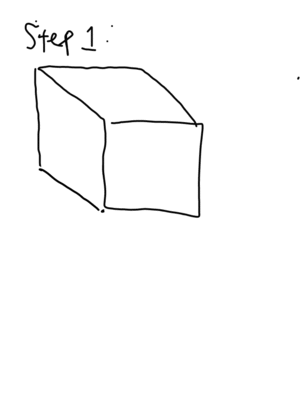OVERVIEW
Note: You may want to first read #7 below in Reflections to clarify the suggested approach.
Some of you may be averse to using pizzas for concept development of division, fractions, ratios,... I've seen criticism of pizzas for awhile!
Similarly some educators don't like using money to develop fractions and decimals.
Here's my philosophy --
Whatever works...
I don't believe children's minds will be permanently damaged from pizzas and money!
THE PROBLEM
[Appropriate Grade Levels: 2+]
Directions to groups: Show at least 4 ways to share the 3 paper pizzas as described in the title.
Then write in words the part of one whole pizza each child gets.
REFLECTIONS...
1) Anything missing here in building division/fraction concepts?
I believe so!
BEFORE THE CHILDREN START SHARING PIECES,
WHAT QUESTION COULD WE ASK TO BUILD FRACTION SENSE, ESTIMATION, etc.,??
One possibility...
Teacher: Before you start drawing lines, choose from one of these:
(Write your choice on your paper in the next 5 secs)
(A) Each child will get more than one whole pie.
(B) Each child will get less than one whole pie.
OK, now defend your answer to your partners in the next minute.
Anyone change their first answer?
So the majority chose (B). Why?
2) Do you believe for young children it is important to give them the time for these kinds of activities?
3) What and how many prior division experiences do you think children need before tackling 3 divided by 4? Do you believe some children are ready from the beginning?
4) I always find an original approach from listening to children. If you choose to use this activity, what 2-3 methods do you think most children would use?
Do you think a few children will immediately divide each pie into quarters? What might they say if you ask them why they did that?
5) How would you enable the TRANSFER of learning from concrete manipulatives to WORDS (verbal representation) to the SYMBOLIC?
Sample...
So you have been dividing 3 pies equally among 4 children.
Let's say that together...
Now let's write 3 pies ÷ 4 children =
Three-_______ of ------ for ----- child =
3/4 pie/child
There's so much more to this. These are just a couple of suggestions which you could modify and improve upon!
6) How would you assess their understanding during the lesson? At the end of the lesson? The next day? On a written assessment or would you consider an individual performance assessment (Show me how you would...)
How do you think PARCC would assess the important ideas here?
7) Of course many of you are thinking:
Why not simply show them 3×8÷4=6 since most pizzas are cut into 8 slices?
Well, I'm suggesting we introduce this to 7-8 yr olds before they learn multiplication and division. Secondly, the children are given BLANK circles to encourage creative open-ended approaches. I want them to experiment with dividing the circles into halves, quarters, eighths, etc...
Remember, as always, I'm writing these for my fellow educators to reflect on their practice, now in the context of the Mathematical Practices of the Common Core.
Been doing this now for almost 7 years on this blog and invariably these kinds of posts are viewed but not commented upon. Why do you think that is? Obviously a rhetorical question!

















